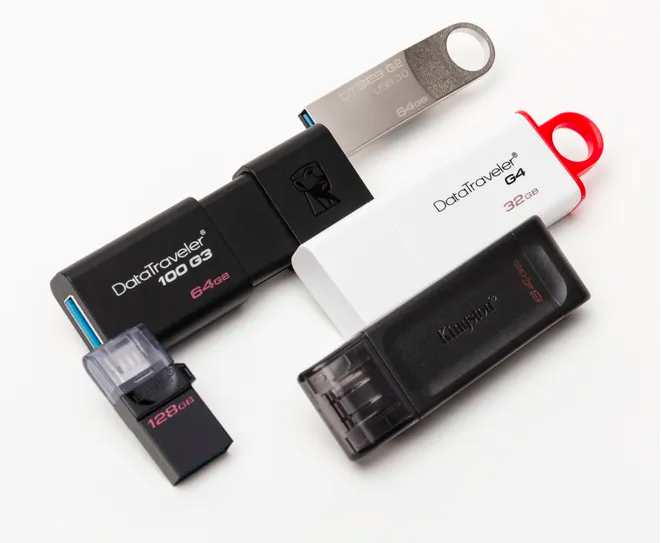Admit it, many of us don’t back up our important files because we’re too busy, don’t know how, or just don’t care enough to do it.
But we will wish we had when the inevitable happens.
Whether it’s a hard drive malfunction, nasty virus, theft, fire, flood, or damaging power surge, in an instant your digital life can go – poof. Suddenly, your documents, precious photos, and irreplaceable home movies are gone in a flash.
It doesn’t really matter how you want to back up your files, as long as you do something and fairly often. “Backup is an insurance policy,” says Tim Bajarin, a seasoned technology analyst and president of Creative Strategies, a market research firm in San Jose, California.
With this in mind, here are five ways to back up, and the pros and cons of each:
External hard drives
An external hard drive plugs into your computer’s USB port, and lets you drag and drop files over for safekeeping. Many come with software that makes regular backups for you or you can download and use third-party software.
It doesn’t matter if it’s laptop or a desktop – be it a Windows PC, Mac, or Chromebook – as these hard drives can handle many and/or large files. Capacity typically starts at 1 terabyte (TB) of storage, which is more than a thousand gigabytes (GB). Digital packrats, this one’s for you.
“Desktop” hard drives are meant to be kept in one place, such as a home office, and require external power (that is, plugged into an AC outlet). A smaller “portable” hard drive gets its power from the computer itself, therefore it can be taken with you.
But we will wish we had when the inevitable happens.
Whether it’s a hard drive malfunction, nasty virus, theft, fire, flood, or damaging power surge, in an instant your digital life can go – poof. Suddenly, your documents, precious photos, and irreplaceable home movies are gone in a flash.
It doesn’t really matter how you want to back up your files, as long as you do something and fairly often. “Backup is an insurance policy,” says Tim Bajarin, a seasoned technology analyst and president of Creative Strategies, a market research firm in San Jose, California.
With this in mind, here are five ways to back up, and the pros and cons of each:
External hard drives
An external hard drive plugs into your computer’s USB port, and lets you drag and drop files over for safekeeping. Many come with software that makes regular backups for you or you can download and use third-party software.
It doesn’t matter if it’s laptop or a desktop – be it a Windows PC, Mac, or Chromebook – as these hard drives can handle many and/or large files. Capacity typically starts at 1 terabyte (TB) of storage, which is more than a thousand gigabytes (GB). Digital packrats, this one’s for you.
“Desktop” hard drives are meant to be kept in one place, such as a home office, and require external power (that is, plugged into an AC outlet). A smaller “portable” hard drive gets its power from the computer itself, therefore it can be taken with you.
“Costs of external hard drives have come down considerably over the years,” says Bajarin. “For under $50 you can get a brand-name 1-terabyte drive, or $69 for a 2 terabyte drive.” The good news is you are not paying monthly for a cloud account, but one negative is some drives could die on you – but they’re getting better all the time. Stick with well-known brands.”

If you back up files to a hard drive, it’s recommended to make a duplicate or triplicate on additional drives and keep them in different places, such as a safety deposit box, a trusted relative’s house, or a different room in your home than your computer (in the event of flood or fire, your backup could be destroyed along with the original).
Without getting too techy, some hard drives can make duplicates to other drives simultaneously (a “RAID” setup), while some networked drives (and “Network Attached Storage” or “NAS” solutions) let multiple devices access files inside and outside the home.
Solid state drives, USB sticks
Similar to the “flash” memory inside your smartphone or tablet, a solid state drive, or SSD, offers several benefits over a hard drive.
For one, an SSD is much faster than a hard drive, whether you’re transferring files over to the external SSD or accessing files from it. Part of this reason is the fact an SSD does not have any moving parts – opposed to spinning magnetic platters inside a typical hard drive.
Another benefit to no moving parts: SSD is less prone to damage than a hard drive, which is incredibly important if you consider you might be carrying around the external SSD around with you, along with your laptop.
SSDs are also much smaller and lighter than an external hard drive, but cost more, on average. “That said, prices have also gone down for SSDs, just as storage has gone up,” explains Bajarin. “But speed and durability are the two main benefits of SSD.”
While some experts say SSD isn’t as ideal for long-term storage – as you might back up files and put it in a drawer for a few years – Bajarin says this isn’t necessarily the case if you “keep the drive dry and connections free of dust.”
“And like hard drives, avoid unknown overseas brands you might see on Amazon. Stick with SanDisk or other well-known names where their record for durability has been proven,” Bajarin adds.
Without getting too techy, some hard drives can make duplicates to other drives simultaneously (a “RAID” setup), while some networked drives (and “Network Attached Storage” or “NAS” solutions) let multiple devices access files inside and outside the home.
Solid state drives, USB sticks
Similar to the “flash” memory inside your smartphone or tablet, a solid state drive, or SSD, offers several benefits over a hard drive.
For one, an SSD is much faster than a hard drive, whether you’re transferring files over to the external SSD or accessing files from it. Part of this reason is the fact an SSD does not have any moving parts – opposed to spinning magnetic platters inside a typical hard drive.
Another benefit to no moving parts: SSD is less prone to damage than a hard drive, which is incredibly important if you consider you might be carrying around the external SSD around with you, along with your laptop.
SSDs are also much smaller and lighter than an external hard drive, but cost more, on average. “That said, prices have also gone down for SSDs, just as storage has gone up,” explains Bajarin. “But speed and durability are the two main benefits of SSD.”
While some experts say SSD isn’t as ideal for long-term storage – as you might back up files and put it in a drawer for a few years – Bajarin says this isn’t necessarily the case if you “keep the drive dry and connections free of dust.”
“And like hard drives, avoid unknown overseas brands you might see on Amazon. Stick with SanDisk or other well-known names where their record for durability has been proven,” Bajarin adds.

On Oct. 1, SanDisk launched a new line of ruggedized SanDisk Extreme Portable SSDs (from $119 for 500GB). Designed for consumers, professionals and enthusiasts, these small and tough drives work with Windows PC, Mac, Chromebook, and a range of USB Type-C smartphones. These SSDs feature up to a speedy 1050MB/second read speeds and up to 1000MB/s write speeds.
For added durability, the drives promise up to two-meter drop protection, water and dust resistance, along with a carabiner loop to secure to a belt loop or backpack.
Also consider USB sticks – sometimes referred to as “jump drives” or “thumb drives” – which are considerably less expensive than a hard drive and SSD and small enough to clip it to a keychain. They’re ideal for easily transferring files between computers – though the latest laptops may have a smaller USB Type-C port instead of the more common and larger USB Type-A (some drives have both connectors). You simply plug it into an available port on a computer and drag and drop files onto it. Many people use Window Explorer for Windows and Finder for a Mac.
Found for as low as $7 for a high-quality 32GB model, these drives can also be plugged into many TVs to play videos, photos, or music.

Storage in the cloud
An increasingly popular option is to back up your files to one of the free password-protected cloud-based services such as OneDrive, iCloud, Google Drive, and Dropbox. These services store your files online – therefore, protected from local threats.
With cloud services, you can access all your backed-up stuff from virtually any Internet-connected computer, tablet or smartphone in the world. Most cloud services have free apps that make it easy to download or upload files with your mobile device.
Cloud storage is free for a few gigabytes – about 5GB, typically – but that might not be enough for those with a lot of files to back up. It should be ample for documents, but not enough for a lot for photos and videos. Cloud services offer a paid option, too, for additional storage.
“With the cloud, you can be at a friend’s house and realize you need a file, and so simply open your phone or open a browser on a computer and access it,” says Bajarin. “I back up everything on my Mac to iCloud and I pay for the 2TB of storage for $10 a month,” he adds.
True, online cloud services like iCloud can save your files automatically, but many external SSDs and HDDs also have software that does that, too (such as every night at 11:30 p.m.).
Cloud computing can also reduce congestion in someone’s inbox. Rather than trying to email a number of large photos or videos to a family member or colleague, which can clog up their inbox, you can simply store them in the cloud and send a link to download the goods. This is incredibly convenient, and easy to do.
Some downsides: You need an internet connection to access your cloud-stored files, so this option may not be ideal for those who live in areas with slow or spotty broad – band and Wi-Fi or cellular connectivity. Also, you are essentially “renting” storage on a company’s server, therefore when you stop paying you can’t access your files.
A surprising storage option
Finally, a free way to back up your important files is to find a device you may have lying around – like a smartphone, tablet or even a digital photo frame – and plug it into your PC or Mac’s USB port to drag and drop important files over.
After all, there is unused storage here, so if cash is tight, find an old Android smartphone or iPad with a broken screen, and take advantage of its internal memory to create an external backup for your computer.
As long as you do something to back up your important files on a regular basis – and the more you can automate it with software in case you forget – the better you can safeguard your digital life.
Resource: https://www.usatoday.com/story/tech/columnist/2020/10/03/storage-solutions-protect-and-back-up-treasured-digital-memories/3593991001/
